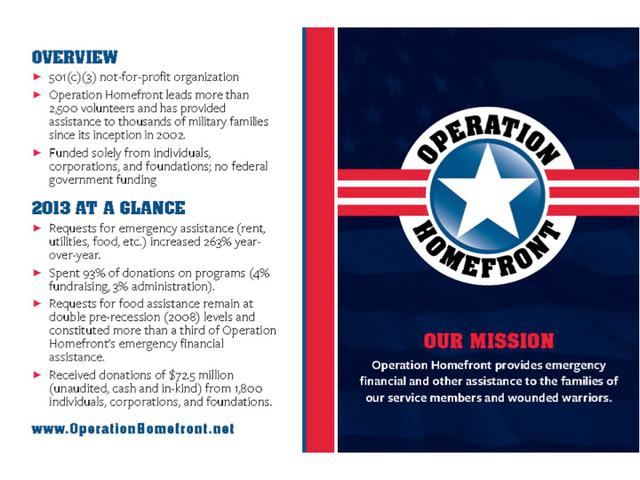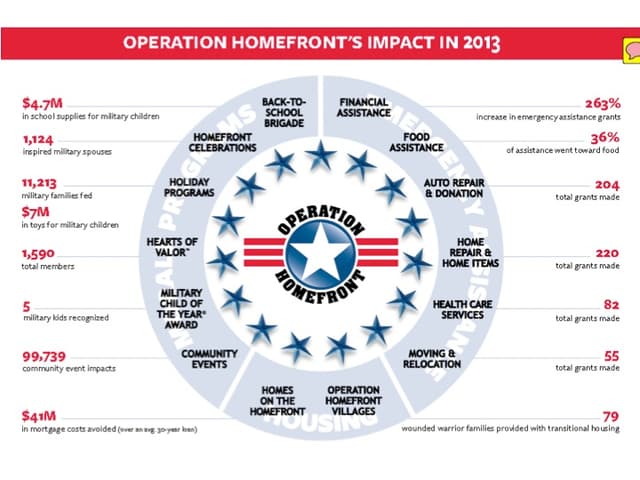Operation Homefront: The Card
- Exhibited by
- Laura Fredricks
- Added
- August 25, 2015
- Medium of Communication
- Laminated card
- Target Audience
- Major gifts and communications
- Type of Charity
- Support for military families.
- Country of Origin
- USA
- Date of first appearance
- 2008
SOFII’s view
We are always dishing out our business cards that don’t really say very much, so it’s great to see this wonderfully simple and innovative idea that grew from a simple request: ‘make it easy for me to help you’. Now many organisations have adopted and adapted The Card and are making it work for them.
Summary / objectives
To simplify the organisation’s message with one simple laminated 3”x 4” card so that board members, staff and volunteers could convey the same facts, successes and funding priorities. So many philanthropic organisations do so much talking about who they are, what they do, how many programmes they have, the money they raise, the community impact they make and so on, which overwhelms a person new to the organisation and existing donors. If the organisation had one simple laminated card that everyone in the organisation could use, from board members to CEOs, staff and volunteers there would be one clear, simple message that would resonate with potential funders.
Background
I started working with Operation Homefront in 2008 because at that time over 80 per cent of their funding came from ‘in-kind’ goods with very little cash. A large problem was that no one really knew what Operation Homefront did and they were getting lost amongst the sea of veterans groups. It really came to light one day in a board meeting when a board member said to the then CEO, Jim Knotts, ‘Just tell us what you want us to say. Give it to us on one sheet that I can put in my breast pocket and take out to refresh myself when I meet someone who is interested in us’. That’s all it took. Jim went back and worked with his communications director and they created ‘the card’ – a simple 3” x 4” laminated card that has the mission, a few background facts and where the money goes.
The board loved the card and began sharing it with everyone they met. The staff loved the card. I made many visits with their major gifts director and we shared the card with every donor. Soon the donors were asking for extra cards so they could share them with their friends. When we returned to see them again they had the card on their desk, by their reading material, it was wild. One simple card did the trick that no 30+ page annual report or brochure could do – resonate with donors.
Creator / originator
Former CEO of Operation Homefront, Jim Knotts
Special characteristics
It is one of a kind, simple and now even donors are asking if they can keep them. It is easy to duplicate and in fact many organisations have done so.
Influence / impact
To my knowledge 10 organisations have created their own simple cards, including Planned Parenthood, The Human Society, Catholic Charities and Alamo College
Test details
Nothing had to be tested. Each organisation created their own card, sharing a few simple facts as to who they serve and where the money goes – and the donors love it. Each card is updated yearly to share that year’s statistics.
Costs
Usually the organisation gets the printing underwritten and members of staff write the copy with the CEO and board approval.
Results
The big result is consistency of messaging and donor engagement. While it cannot be directly tied into quantifiable fundraising dollars I do know that board members especially are more willing to speak about the organisation if they know exactly what needs to be shared and this card does that for them.
Merits
It is simple, easy to duplicate, cost effective, organisations love it and it gets everyone in the organisation on every level to say the same thing – consistency of messaging wins the day.
 View original image
View original image
Also in Categories
-


















